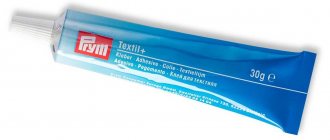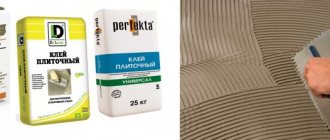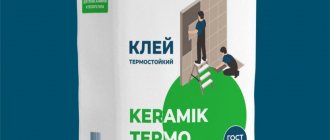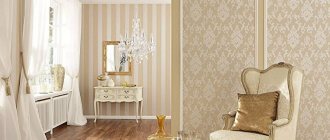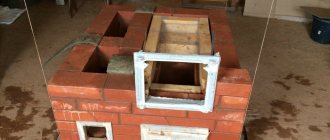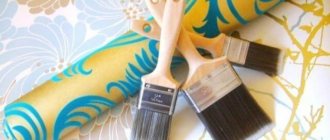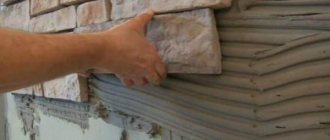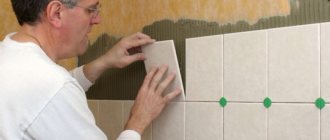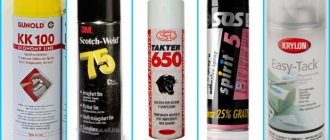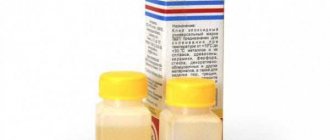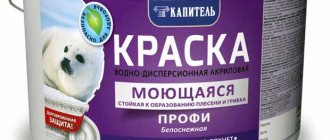Craftswomen often wonder: how to choose a good glue for decoupage? Is it worth spending money on expensive branded products or is it better to use regular PVA glue? What type of product should I use for working with certain materials? I really want my handmade work to look neat and retain its charm for a long time! In this article you will learn what decoupage glue is, how it differs from regular glue, and whether you can replace it with something or prepare it yourself.
Decoupage for beginners: collecting everything you need
First, let’s briefly talk about what you’ll have to work with and what you’ll have to work with. In general, decoupage is fastening on the basis of a material or paper with a printed pattern. To ensure that the design does not wear off longer, it is coated with several layers of varnish. Here is a brief description of the decoupage technique.
Decoupage is a technique that allows you to make something special out of ordinary things.
Base
Any weakly absorbent base is suitable as a base for decoupage. What can this technique be used on? On the following grounds:
- Wood of any degree of processing (without impregnation, with impregnation, sanded or not, painted, varnished). It’s just that preparation requires a special list of work and the time spent on preparation will vary.
- Plywood, treated or not.
Even an ordinary flower pot can be turned into an art object - Plastic - painted, transparent, smooth, rough.
- Glass and products made from it.
- Porcelain, faience.
As you can see, the list is substantial. Only very porous substrates with a lot of irregularities are not suitable for decoupage. And this way you can decorate everything: from dishes of any kind to furniture and doors (and you can use both the surface of the doors and glass inserts).
List of tools
You need a few tools:
- Small sharp scissors (you can use good manicure or stationery scissors, medical ones). You can - several pieces with different blade shapes.
- Brushes and Brushes. To work with small products for decoupage, you will need flat brushes with a width of 0.8 to 2.5 cm. The pile is thin artificial. These brushes are convenient for applying glue and varnish.
- To apply acrylic paint when you are painting the base, it is more convenient to use a sponge. But it provides a rough foundation. In order for the surface to be smooth, you need a brush - flat or round, but larger (depending on the size of the product).
Decoupage for beginners - we start by purchasing the necessary tools - To draw and highlight details, you will need thin artistic brushes.
Everything from tools. Unless you still need stationery - a ruler, a pencil, an eraser.
Consumables
Now we will talk about consumables. We won’t talk about napkins and paper here—they’re a separate item. In addition to them, to make decoupage with your own hands, you will need:
- Water-based acrylic varnish. You can, of course, take another one, but this one is the best. Does not smell, does not darken over time. There are different types of this varnish. It can be transparent or with some kind of effect (with glitter, antique, etc.). The surface can be matte, semi-matte, glossy, semi-gloss. Suitable for both ordinary construction and special ones for decoupage (more expensive).
Varnish, paints, glue - all this will be needed if you want to master decoupage - Acrylic paints. They are used to complete and tint the drawing so that the picture assembled from pieces is a single whole.
- Sandpaper. Take medium and fine grain, several gradations. Again, it depends on what you are processing. For initial sanding of wood you will need paper with a grain of 250-400, for finishing - with a grain of 600-800 (finer paper only makes sense on sanding machines). After drying, we will also sand off the imperfections of your work with sandpaper.
- Glue. Handicraft stores have special glue for decoupage. But it's expensive. It works just as well if you use PVA glue.
Any good scissors will do for cutting. - Priming. Used to reduce the absorbency of wooden surfaces.
- Wood putty. Also a specific material that is used to seal wood defects.
That's all that may be required, so although decoupage requires a financial investment for beginners, it is not very large.
DIY structural paste for decoupage: master class with video
If you are creative and need a structural paste, making it yourself is as easy as shelling pears. In this material you will learn how to quickly make paste from improvised materials.
Structural paste is a special tool for drawing three-dimensional figures, which can be purchased at a specialized store or made independently. There are situations when a structural paste may be required, but it is not available. This is not a reason to be upset, because it is easy to create a structural or texture paste yourself.
Paste from cosmetics
The simplest recipe that absolutely anyone can make if they have the following ingredients:
- universal PVA glue;
- blush, eye shadow, powder and other similar cosmetics.
Cosmetics may be expired, but this will not affect the quality of the paste made.
Advice for the future: maybe you shouldn’t immediately throw out expired shadows, because they can be useful in needlework.
So, an easy master class on making texture paste.
We take universal PVA glue.
Why universal? Its consistency is more advantageous, it is not afraid of water. And for various types of needlework, for example, for decoupage, water resistance is an important quality.
Then we select cosmetics that match the color:
Napkins, paper
For decoupage, napkins and paper with a printed pattern are used. They are glued to the surface and covered with varnish. There are the following types of materials for this type of decor:
- Napkins. Most often they are three-layered - the bottom two are not used. The design is applied to the top layer. It is separated and used during work. You need to know how to work with napkins, as they are very thin, stretch, bubble, and tear. In general, you need a certain skill in work. Napkin decoupage for beginners is not always easy. The average price is 12-18 rubles per pack.
Napkins for decoupage are soft and thin, you need to work with them carefully - Decoupage card on rice paper. The design is applied to a canvas made of rice or mulberry fibers. It is easier to work with because it is more elastic, stretches better, and does not deform when working with compounds containing water. There are different sizes (up to A4 format and larger) and density, the cost of one card is from 70 rubles.
- Cards for decoupage on paper. Plain paper is used, on which drawings are applied. They are good when gluing on flat surfaces, as they practically do not stretch. It differs not only in size and patterns, but also in density. The cost of paper cards for decoupage is from 35 rubles.
Paper decoupage cards - can be tried on flat surfaces - Prints on photo paper. You can order a print of any unique image. It will be transferred to thin photographic paper, but to work with it, you need to know certain techniques.
In general, they also use special pastes to create three-dimensional images, ordinary photographs from which the bottom layer of paper has been removed, and other drawings. But it’s not easy to work with them, and this is not decoupage for beginners, but for those who are already developing their skills.
Manufacturers
The main producers of decoupage mixture of interest are the USA, Russia and Italy.
- Mod Podge PLAID is an adhesive varnish from the USA designed for decorating hard surfaces. Characterized by rapid drying - up to 72 hours. Before the glue dries, it can be easily washed off with warm water, but after drying, getting rid of the pattern will not be so easy. In addition to strength, the composition gives the product a pleasant matte appearance. The average price of a package is 1000 rubles.
- Decola is an acrylic-based decoupage composition produced in Russia, suitable for working on fabric, wood, glass, and metal. Dries in 12 hours. Absolutely colorless after drying. The cost is within 150 rubles.
- The Italian manufacturer offers decoupage glue La Doratura , intended for gilding work. This composition is suitable for treating glass and other water-repellent surfaces. The price per package is about 1000 rubles.
Napkin decoupage: techniques
The main idea of decoupage is to decorate a surface with an image or design. The process is creative and there are no concepts of “right” or “wrong”. The surfaces and patterns are different, so different techniques are used. You just need to choose the method that works best for you.
Decoupage bottles - a good start for beginners
The easiest way to start mastering decoupage is by gluing large fragments. When you learn how to glue napkins without folds, you can move on - master the methods of volumetric decoupage or using crackle varnish. In the meantime, let's figure out how to work with large fragments.
Preparatory work
First of all, you need to remember that napkin decoupage for beginners will have to start with preparing the base. It should be even, smooth, without holes, chips, or humps (except for those that are specially provided). To help - putty and sandpaper. After the surface is leveled, the workpiece is covered with primer (selected according to the type of material) and then coated with white paint.
The base is brought to perfect condition, covered with primer (if it is absorbent) and painted with white acrylic paint
The stage of applying white paint is mandatory. The fact is that the napkins are very thin, and when glued they become translucent. If they are glued to a white surface, the design remains bright. If the surface is colored or dark, it fades noticeably and there is no desired effect. Therefore, paint must be applied even to plastic or ceramics, and possibly in several layers.
What to do with a napkin
First you need to decide what type of napkin to use.
- If the surface is flat, it can be glued entirely.
- You can't stick a whole one to a curved surface. It needs to be divided into fragments. They can be: cut;
- tear.
The decoupage napkin is torn if the design is small and fragments are cut out if it is large
How to decide whether to tear the napkin or cut out elements from it? According to the size of the picture. If the fragments are large and have clearly defined boundaries, they are cut out. If the drawing is small, it will stick one next to the other, they will be torn. This will make it easier to match the edges.
Gluing methods
You can only choose how to glue napkins for decoupage through experience. First of all, we decide what exactly we will glue with. Can:
- Varnish.
- Special glue.
- PVA - diluted or not.
- Glue stick.
- Egg white.
Gluing to varnish is no worse than gluing to glue. But after drying, you can’t do anything - the napkins become almost monolithic with the product. If you don't like something, you won't have a chance to change it. That’s why beginners most often use PVA glue - it’s cheaper and easier to work with.
Most often, diluted PVA glue is used.
If you decide to use PVA, you will have to think (or try) to use it diluted or undiluted. Most often it is diluted with ordinary water in a 1:1 ratio. When using such an adhesive composition, you must be prepared for the fact that the napkin gets wet from the water, can be pulled in different directions, and can tear due to careless movements. In general, you need to adapt.
Before work, separate the color layer. We will glue it
A glue stick is also a good option... if you can get all the bubbles and wrinkles out. This occurs normally on smooth, slippery surfaces. If the surface is rough, this is much more difficult. It is safe to work with egg white, but it is specific, so if you want it, you have to try it.
How and where to apply the adhesive
Beginners usually choose their first object for decoupage to be small in size. In principle, this is not bad. It’s just desirable that the shape be simpler: without a lot of bends.
If the decoration object is small, you can use a brush or fingers to apply the glue. Then use the same “tool” to level the napkin. Use a flat or straight brush - whichever is more convenient for you. Many people prefer to work with their fingers - you can feel all the folds.
You can work with a brush or your fingers
When gluing napkins for decoupage, you can apply the glue to the object or to the napkin. They do this and that. When applying to a napkin, again, there are two techniques:
- The glue is applied evenly to the entire piece to be glued, applied to the base in the middle. Using movements from the middle to the edges, air bubbles are expelled and folds are straightened.
- A certain amount of glue is poured into the middle of the fragment. Next, the steps are the same: lay it on the base, smooth it out.
In the second technique, it can be easier to deal with bubbles and folds - with a large amount of semi-liquid glue it is easier.
What and how you do is not important. It is important that there are no wrinkles or bubbles
You can do the same if you spread glue on the base: make a small puddle in the place where you are going to glue the fragment, lay it down, and, lifting the edges, drive out the bubbles and smooth out the folds.
Decoupage of a flat surface: glue + iron
When decorating a flat surface, you can do it easier than driving bubbles through the entire napkin. Apply a layer of PVA glue to the primed surface or coat it with a glue stick. Spread well so that no “tracks” are formed. Let it dry. To speed up the process, you can take a hairdryer.
Decoupage technique with iron
Place and level the napkin on the dry surface and smooth it with your hands. We place a piece of baking paper on it and begin to smooth it with a hot iron from the edge.
Decoupage for beginners - maybe try something like this?
As the glue heats up, it saturates the napkin. Usually it turns out quite smooth. When everything is glued, coat the top with more glue and let it dry. This is perhaps the easiest way to learn decoupage for beginners.
File+water and glue
Decoupage for beginners using a document file (choose thicker film), water and glue. This method is good if you will decorate with large drawings (cut out). Pour some clean water into the middle of the file and place the cut out fragment in it, face down. We carefully straighten it, expelling bubbles and straightening wrinkles. In a puddle of water this is not difficult.
We straighten the fragment in water on a file
When the fragment is straightened, lift the edges of the file and drain the water. The design remains stuck to the smooth film. In this state it is convenient to “try it on” and look for the best place for it.
Having found the area where you want to place the decoration, we apply the design on the film and begin to smooth it out. This is a very difficult moment. You need to ensure that at least one edge of the napkin sticks. After one of the edges of the image has been fixed, gradually smoothing and lifting the edge of the film little by little, we ensure that the napkin remains on the base. If you act gradually, gradually gluing the picture to the base, bubbles or folds will not appear. This method is suitable as decoupage for beginners.
When one edge sticks, everything is no longer difficult
The last step is to coat the stuck napkin with diluted PVA glue. After it dries, we apply a protective layer of varnish.
A few secrets
This cannot be called methods of gluing napkins for decoupage. These are little tricks and tricks that can help you get rid of creases faster or better.
- Before work, the cut out fragments are moistened with water from a spray bottle. The napkin stretches, but when it dries it no longer shrinks. If it has become very warped, it is ironed. Then use it as usual. Since the paper is already straightened, it hardly stretches anymore. Everything goes easier.
- Moisten the fragment with acrylic varnish in the form of an aerosol. In this case, the napkin will become rigid, it will not stretch or form folds. But varnished, it no longer allows glue to pass through, so we coat the surface with glue and glue the treated napkin onto it.
- Wet the napkin that is already lying on the base (dry) and only then coat it with glue. It's a little difficult to explain, watch the video.
Features of working with glue
Decoupage glue is distributed over the surface of the workpiece with a soft brush. It is better to choose one with column pile.
Don't use old brushes. They may leave lint on the surface. Once the glue has dried, it cannot be removed.
Instructions for working with glue:
- Distribute the adhesive component evenly over the surface of the workpiece.
- If you are using napkins, separate the image layer.
- Place pattern side down on a plastic sheet.
- Use a spray bottle to dampen the napkin. Leave for 1 minute until the paper is completely saturated with water.
We eliminate flaws
If the surface is decorated with small torn fragments, from which it is necessary to obtain a single whole, straighten the edges of the fragments with a brush or fingers. If there is color unevenness somewhere, dilute the paint of the desired shade and paint over the translucent base.
When the surface is no longer very wet, but has not yet dried, you can use thin brushes and acrylic paints to draw in the details, add brightness and clarity.
The next step is to decorate the edges of the product. There are different approaches here. In some places you have to trim the edges evenly, painting the sides, in others you can wrap the napkin on the back side and glue it there. In general, this is also a whole science.
Getting it to the finish line is an equally creative process.
After this, you can leave the product to dry. To speed up the process, you can use a hair dryer, but you need to keep it at a considerable distance, move it all the time and make sure that it dries evenly. If after drying you see that there is a fold on the glued napkin, you can still fix it. Take fine-grained sandpaper and sand it. We act gently so as not to damage the drawing around.
Application of universal and special composition
Decoupage glue can be universal, that is, suitable for any surface, or special. The second type is used for work on the following surfaces:
- Glass. Choose a special glue for decorating porcelain, ceramics, and any glass surfaces. The substance requires heat treatment: after drying, excess glue is removed from the product, then it is fired in the oven for 1.5 hours at a temperature of 130 degrees. First, the product is placed in the cabinet, and only then the oven is turned on. The item should be removed from the cooled cabinet.
- Textile. Glue for working on fabric means any type of fabric. After gluing the napkin, the product is ironed (at a temperature that the fabric allows).
- A special composition containing wax exists for decorating candles. Decoupage is best done on large candles that melt only around the wick. This way the paper will not melt along with the candle.
Photos of products using decoupage technique
Studying technology is not bad, but without knowing the possibilities, it is difficult to imagine what can be done and what can be expected. A few photos will help you decide what you can or want to do.
Decoupage can transform an old table into a new and very unusual one.
Decoupage for beginners: standard bathroom furniture has become vintage
You can turn a boring standard kitchen into a work of art
Transformation of old kitchen facades
Stools are also an art object
This technique is called reverse decoupage - napkins are glued to the glass with the front side
Methods of applying an image
- When an image is applied wet, using an iron or dry and then coated with varnish, this method is called classic. Toning is sometimes used.
- A successful combination of background and pattern is created in an artistic way and creates the illusion of painting.
- When an image is glued to the back side of a transparent surface, the decoration method is called reverse.
- A deco patch creates an imitation of a patchwork quilt. You can choose any material as a material. For the first works, it is better to use special paper.
- The volumetric method involves the use of structural paste, fabric, and eggshells.
Terms of use
Decoupage glue has its own application nuances. It is applied in doses using a flat brush. Some people prefer to use a soft sponge. Excess glue can cause uneven gluing of a paper napkin or decoupage card. The composition is applied after the picture is prepared, for which it is cut out according to the intended shape and separated from the other layers.
Some people think that the napkin should be pre-moistened in water and only then transferred to the working surface.
However, practice proves that moisturizing is undesirable, since it is very difficult to level the napkin, and even more so to move it.
After the picture is cut out, it can be applied to the place of fixation and coated with glue on top, saturating and straightening the paper design, preventing the formation of bubbles. You can apply a little glue to the base itself and, having attached the drawing, add glue on top, leveling the image with a brush or sponge.
You can’t hesitate to straighten it out – the napkin becomes soft very quickly. You can’t move the brush over the same place many times, because this can lead to the picture breaking. You need to straighten it in the direction from the center to the edges.
After the fragment is glued, the brush is washed and put away (after drying, you won’t be able to wash it; it will be damaged).
